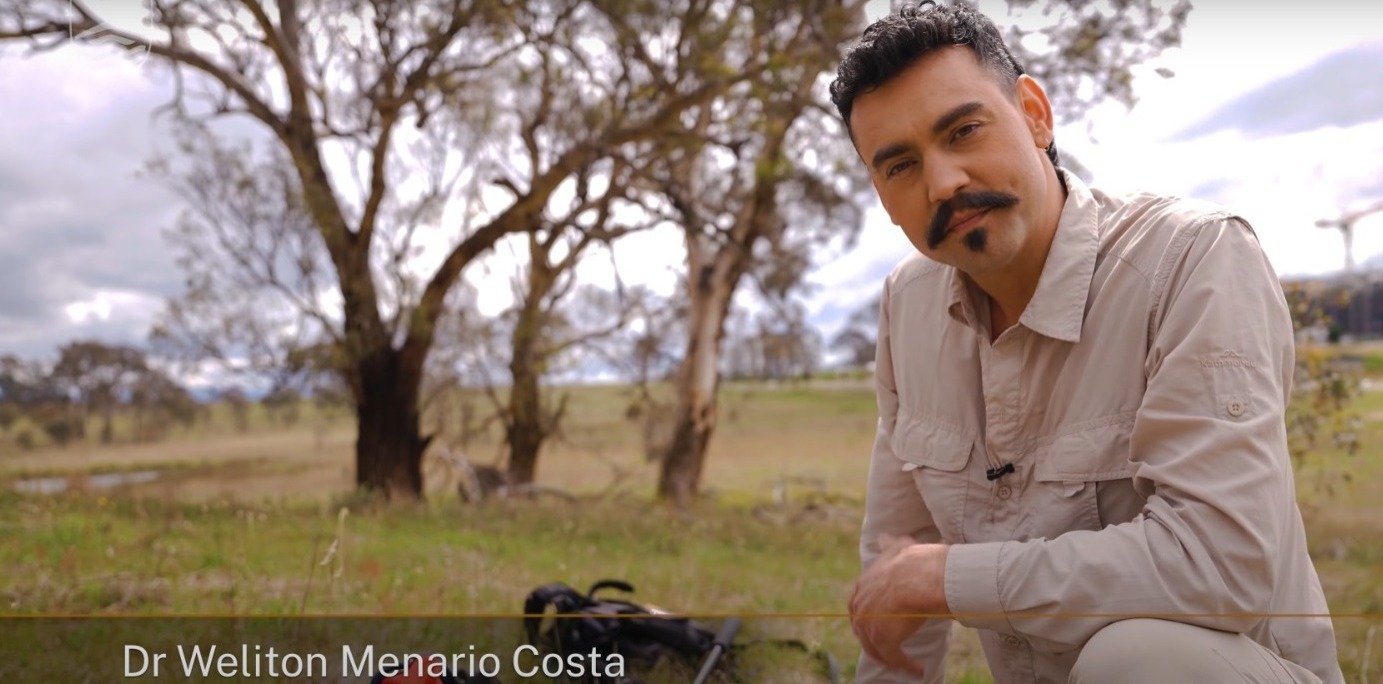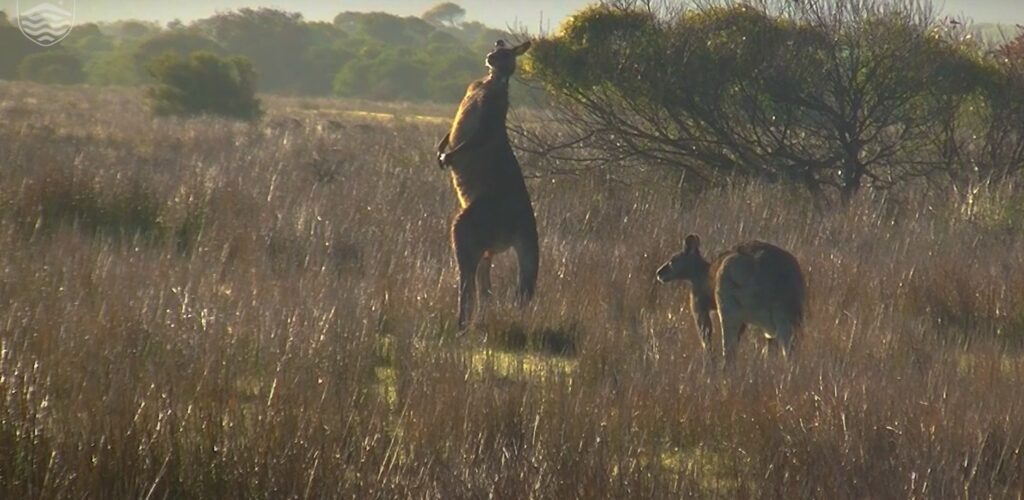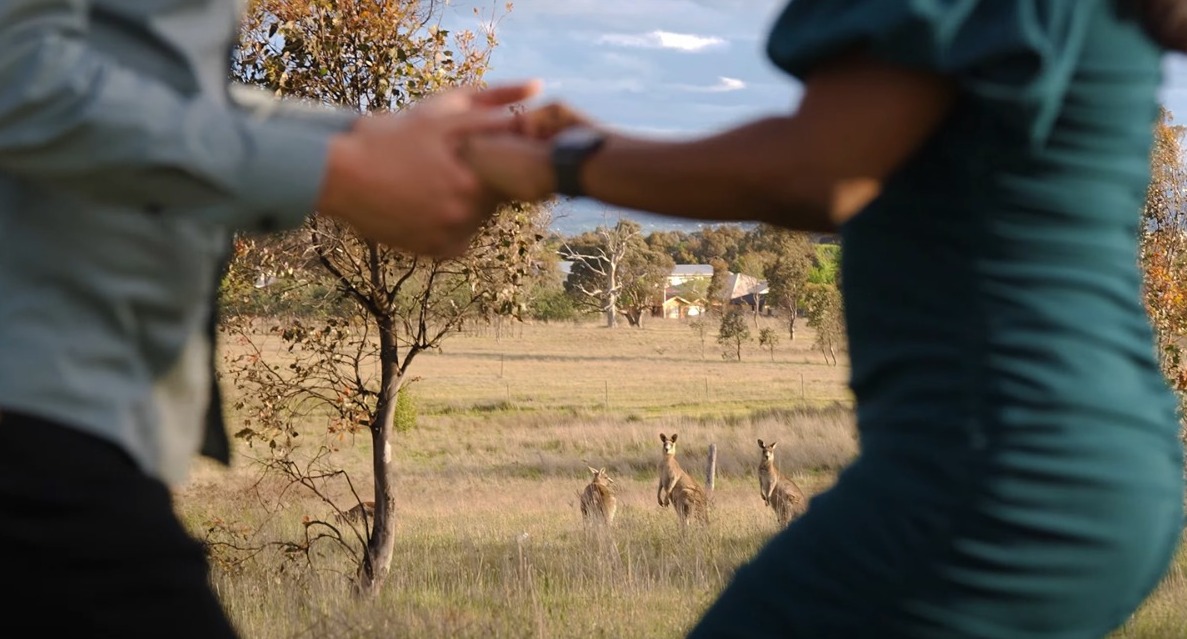
Kangaroos have personalities and stay with or return to their home ranges. These are some top findings about the nature and social behaviour of these unique Australians that informed a recent PhD by a Brazilian immigrant who did his research through the Australian National University.
He went on to gain global applause for a joyful educational video that featured his findings scrolling across a foreground of humans dancing in a paddock while kangaroos appeared to look on in the background.
Kangaroo Time, the video made by Dr Weliton Menário Costa featuring his friends and associates, both human and marsupial, won the top prize this year in the American Association for the Advancement of Science, Science Magazine and their partners Dance your PhD competition. The competition challenges scientists to engage the public with their research using dance, music and humour. Weliton, Weli to those who know him – with production assistance from ANU colleagues – created an engaging piece of communication, as you can see here. https://www.youtube.com/watch?v=RoSYO3fApEc
Weli also has a channel on YouTube “@WildWooHoo”, that he is expanding with a new website ‘Wildlife Chat’, thus continuing as a wildlife educator while he pursues a new direction as singer songwriter.
So, what did he learn about kangaroos and how did he come to studying them?
Raised in a small conservative Brazilian community, (where he is now attempting to explain his research) he gained a scholarship with the ANU Research School of Biology. He told us that he arrived with an already well-exercised interest in studying social animals. He spent three years on and off at a national park research site on Wilsons Promontory in Victoria where research amongst Eastern Grey kangaroos had accumulated 15 years of data and kangaroos were tagged for identification. You could not proceed to conclusions without long-term data, he said.
Weli told ANU media that his major research tools were a little remote-controlled car and “smooth jazz”, as well as his physical presence. He observed different kangaroo behaviours in response to novel events: the car approaching, the music, and a human getting closer. Charting those behaviours for consistency led to theories about personality differences and how they played out within group social dynamics.
Kangaroos have unique personalities that develop early in life and that influence behaviour. For example, being shy versus bolder in risky situations. Humans may have observed the bolder personality like this: taking a stand against an attacking dog, versus running away.
Siblings tend to have similar personalities, as do mothers and their joeys/offspring. However, the research concluded that when in groups kangaroos prioritise conformity with others in their behaviour and adjust democratically, as Weli put it “without bias towards, gender, age or extreme personalities.”

Contrary to (my) and other opinion, this
research found there is not an alpha male as such in a location. Dominance is only shown when there is something to fight for and usually smaller males will signal submission. When a female is interested, there can be competition amongst her suitors, in some cases escalating to a full-on mating chase. In answer to the comment that we have heard females select the best suitor with the best genes, Weli said there is a theory that a physiological pathway may allow females to select which semen survives post copulation.
‘Us and their group behavior: about Weli’s research, how the
prize-winning video was conceived to mimic human and animal group behaviour here: https://www.youtube.com/watch?v=2U76WCw3dhw

AWPC Note: Kangaroo Time was filmed on Mullangarri Grasslands nature reserve where, sadly, kangaroos are systematically shot and pouch joeys beaten to death in June and July by hired gunmen working for the ACT government, as elsewhere on Canberra urban reserves. Many compassionate human voices raised across a decade against this program have not yet stopped the killing.